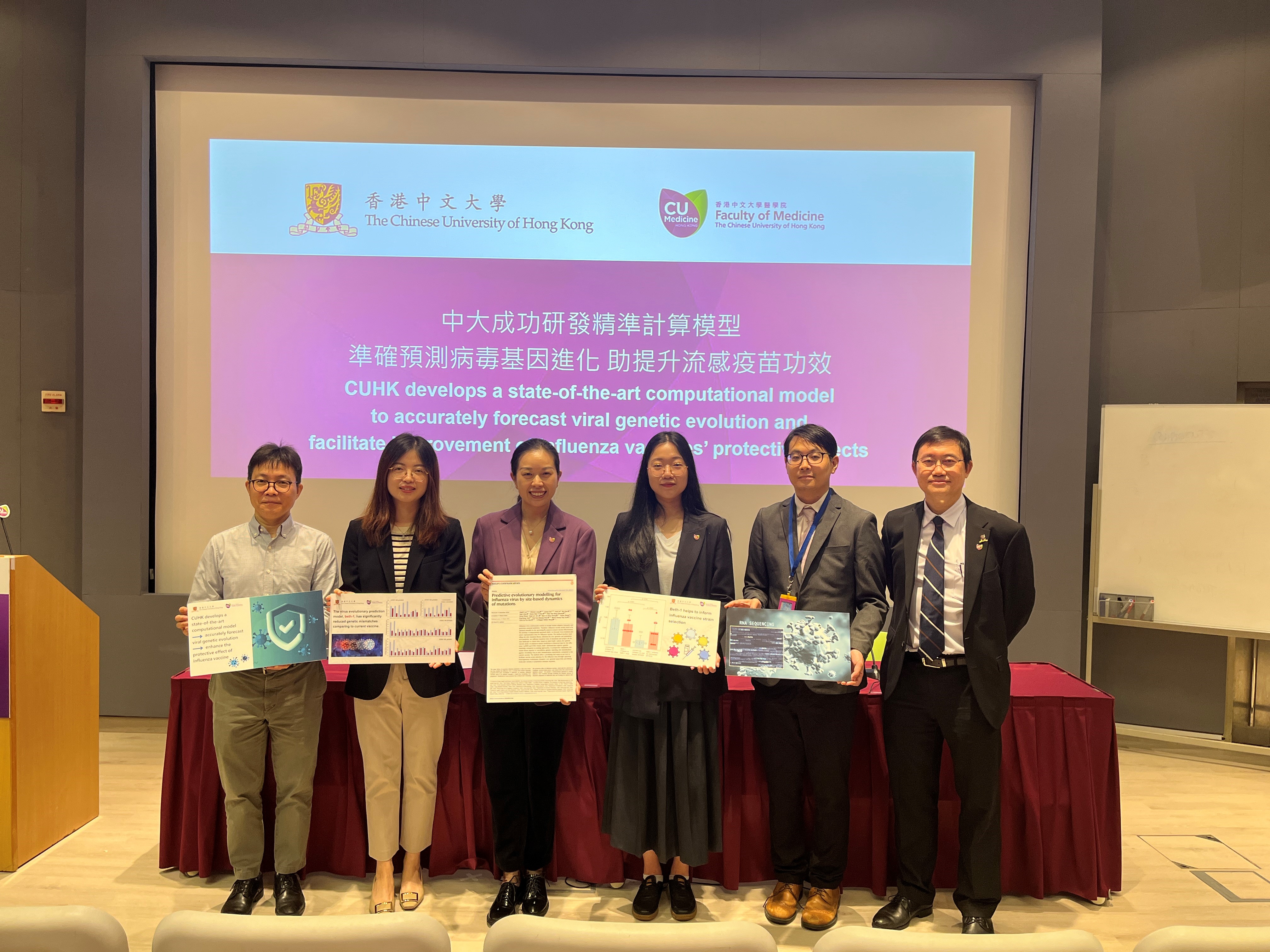
Hong Kong scientists have developed a new computational model that can help raise the effectiveness of influenza vaccines, they revealed at a press conference on Monday.
The scientists, a research group from the Chinese University of Hong Kong, said they are working with Chinese mainland institutions to conduct animal experiments to explore further applications for the model.
Maggie Wang Haitian, associate professor at CUHK’s Faculty of Medicine, said the model, which has been in development since 2019, can predict how a virus will change after nine months, 18 months and even 24 months, making it possible to develop an effective vaccine to combat the virus as it evolves into the future
The homegrown model, beth-1, can forecast the genetic evolution of viruses, which can help with developing influenza vaccines with stronger protective qualities, especially against H1N1 and H3N2 — two flu subtypes common in Hong Kong — the developers said at the press conference.
ALSO READ: Hung: Hong Kong is ready for the next pandemic
The scientists explained that the influenza virus is constantly evolving to find ways to overwhelm people’s natural immunity, and therefore flu vaccines need to be updated every year to ensure their effectiveness against the latest evolutions. Normally, vaccine producers can predict the evolutionary path of the virus at least nine months ahead of the next flu season, and can manufacture vaccines to address this, they added.
The CUHK team created beth-1 after extensive analysis of the influenza viral genome and after studying historical epidemic data.
The new model, which characterizes the key parameters quantifying mutational change and projects the virus population into the future, can identify virus strains that are likely to emerge in the next flu seasons, according to the university.
ALSO READ: Flu season sees spike in drug production
Maggie Wang Haitian, associate professor at CUHK’s Faculty of Medicine, said the model, which has been in development since 2019, can predict how a virus will change after nine months, 18 months and even 24 months, making it possible to develop an effective vaccine to combat the virus as it evolves into the future.
To test beth-1's accuracy, researchers used it to predict the evolutionary paths of the H1N1 and H3N2 virus strains. Results revealed that beth-1’s predictions are more accurate than those used to produce vaccines for 15 out of the last 17 influenza seasons. Using virus strains selected by beth-1 can raise the effectiveness of current vaccines against H1N1 by 13 percent, and against H3N2 by 11 percent, the university said, adding that the study details have been published in the journal Nature Communications.
Wang added that the research team is collaborating with research institutions on the mainland to conduct animal experiments for vaccine development. “I believe its potential application can also be extended to other rapidly mutating viruses like COVID-19,” Wang said.
According to data, each increase by 5 percent in vaccine effectiveness could prevent 1 million people from becoming infected and 25,000 from having to be hospitalized over the course of one season in the United States alone.
READ MORE: HK residents urged to take jabs as respiratory diseases rise
Lou Jingzhi, a PhD student from CUHK and the lead author of the beth-1 paper, said the findings can “provide information to vaccine manufactures, allowing them to design vaccine candidates with better genetic matching”.
Benny Zee Chung-Ying, who helms the Centre for Clinical Research and Biostatistics at CUHK’s Jockey Club School of Public Health and Primary Care, said that the development of beth-1 serves as an excellent example of how to convert a multidisciplinary effort into a ready-to-use tool.
“The model has potentially wide applications for virology laboratories, vaccine manufacturers and health authorities in influenza vaccine strain selection, leading to more effective vaccines,” Zee said.


